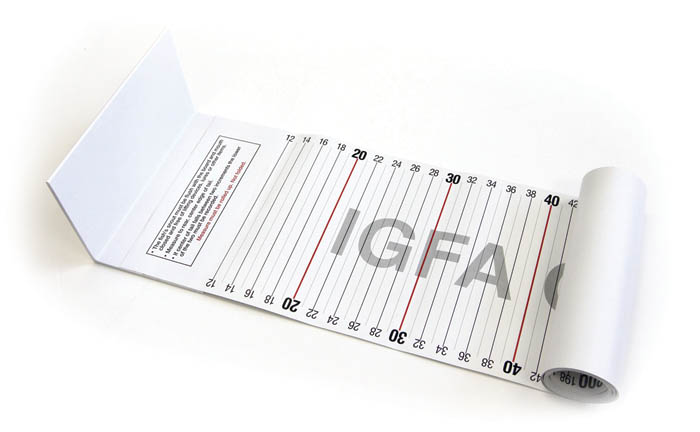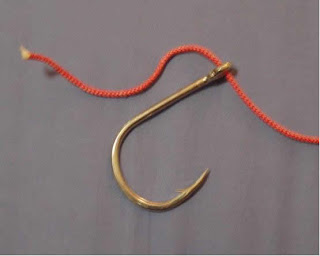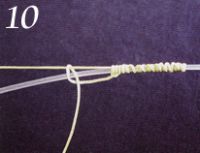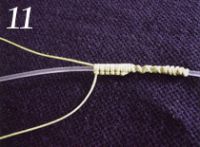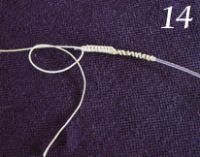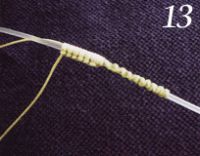Memburu spesis perkasa dan mencipta rekod baru adalah idaman bagi setiap pemancing tegar. Ada antara kita mungkin telah melakukan tangkapan yang mampu mencatat rekod dunia bagi spesis spesis tertentu. Namun ada perkara yang perlu diambil kira sebelum mencatat satu rekod dan di catatkan di IGFA rekod. Di sini aku ada artikel yang perlu kita tahu mengenai syarat-syarat yang ditetapkan oleh IGFA sebelum rekod tangkapan bolah diambil kira.
General Information
All fish entered for Length Records must be measured by
anglers at the site of capture and released so that it swims away on
their own and in good condition. Fish should be revived by moving it
forward in the water to ensure a healthy release. Fish caught and
entered for length records are not eligible for weighing and submission
for other record categories.
Rules and Equipment Regulations
All IGFA rules and equipment regulations stipulated for
fishing with conventional and fly tackle in fresh and saltwater shall
apply with the exceptions below. All angling and equipment regulations
shall apply until the fish is measured and released alive.
A. GAFFS & NETS
1. The use of gaffs to land fish is prohibited.
2. Nets used to boat or land a fish must not exceed 8 feet (2.44
meters) in over all length. (When fishing from a bridge, pier or other
high stationary structure, this length limitation does not apply.)
3. The use of knotless, rubber coated nets or other similarly designed
nets that minimize slime and scale removal is strongly recommended.
B. MEASURING DEVICE
1. All fish must be measured using an official IGFA measuring device. (order yours at http://store.igfa.org/)
2. The measuring device mat may be shortened by cutting it, but it may not be rejoined after it has been shortened.
Angling Regulations
The following acts will disqualify a catch:
1. Failure to comply with IGFA equipment or angling rules.
2. If the fish dies during the documentation process, or does not swim away on its accord after release
Length Record Requirements
All fish entered for Length Records are subject to the same
requirements stipulated for other record categories with following
additions and exceptions.
A. MEASURING REQUIREMENTS
1. Fish must be measured using an official IGFA measuring device on a flat surface.
2. The fish’s snout must be touching the nose stop with the mouth closed and free of lures or lifting devices.
3. With the fish lying on top of the measuring device, measurements
will be taken from the most forward part of the fish’s snout with the
mouth closed to the rear center edge of the tail.
4. All measurements will be made in centimeters.
5. Fish that measure between centimeter increments shall be recorded at the lower of the two increments. For
example, a fish that measures between 45 and 46 centimeters will have a recorded length of 45 centimeters.
B. MINIMUM LENGTH REQUIREMENTS FOR VACANT RECORDS
Fish entered for vacant record categories must measure
within the top half of that species maximum recorded length, as shown in
the eligible species list.
C. MINIMUM LENGTH REQUIREMENTS NEEDED TO DEFEAT OR TIE EXISTING RECORDS
1. To defeat an existing record, the fish must measure at least two (2) centimeters longer than the existing record
2. A catch which matches the length of an existing record or exceeds
the length by less than 2 centimeters will be considered a tie. In the
case of a tie claim involving more than two catches, length must be
compared with the original record (first fish to be caught). Nothing
measuring less than the original record (first fish to be caught) will
be considered.
D. PHOTOGRAPHIC REQUIREMENTS
Photographs included with applications must contain the following information.
1. The full length of the fish on the measuring device clearly showing
the position of the mouth and tail. The fish may be held in position,
but must be done in a manner that does not obscure the view of the fish
on the tape.
2. A close up showing the position of the fish’s nose and tail on the measuring device.
3. The angler with the fish.
4. The rod and reel used to make the catch.
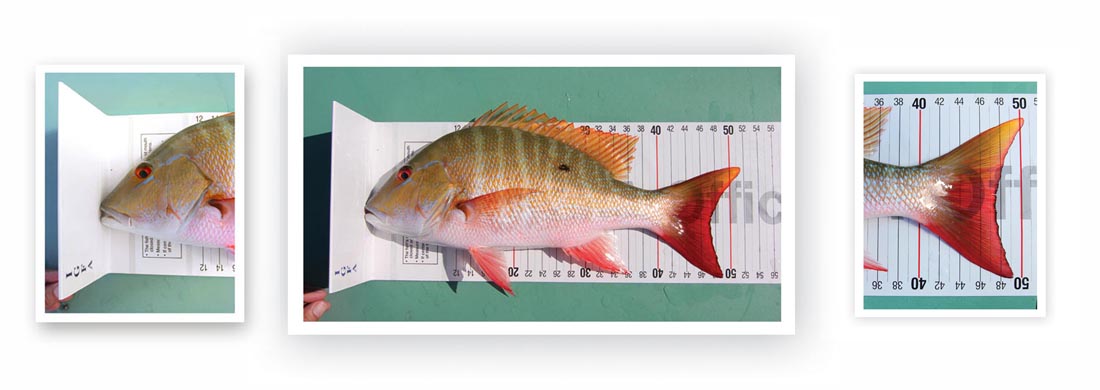
General Best Handling Practices
To remove your fish from the water to document it for
record purposes, anglers should use either hands or a knotless,
rubberized landing net to minimize slime and scale loss. Lip gripping
devices may be used to help subdue fish. However, large fish should not
be hoisted vertically out of the water, as this can cause damage to jaw
muscle and bone as well as to internal organs. The best method for
removing fish from the water by hand is to grip the fish or the lower
jaw and support the fish’s underside. Again, the point is always to hold
fish horizontally and not vertically.
Documentation
IGFA records require pictures, measurement and/or
weighing of the catch. All of this takes time, so you should have the
necessary equipment ready before landing the fish. If the documentation
process takes longer than several minutes, periodically place the fish
back in the water or place in a live well to allow it to breath.
Releasing
Considerable time and care should be exercised when
releasing fish. Fish should be placed in the water and held by the base
of the tail. If the fish
is does not swim away from your grasp on its own, gently move it
forward in the water to get water flowing over the gills. For best
results, move the fish in the forward direction only instead of back in
forth. A fish’s gills somewhat resemble the pages of a book and are
designed for water flow in only one direction. Moving the fish in a
slow circle or gently towing it behind the boat will accomplish this.





